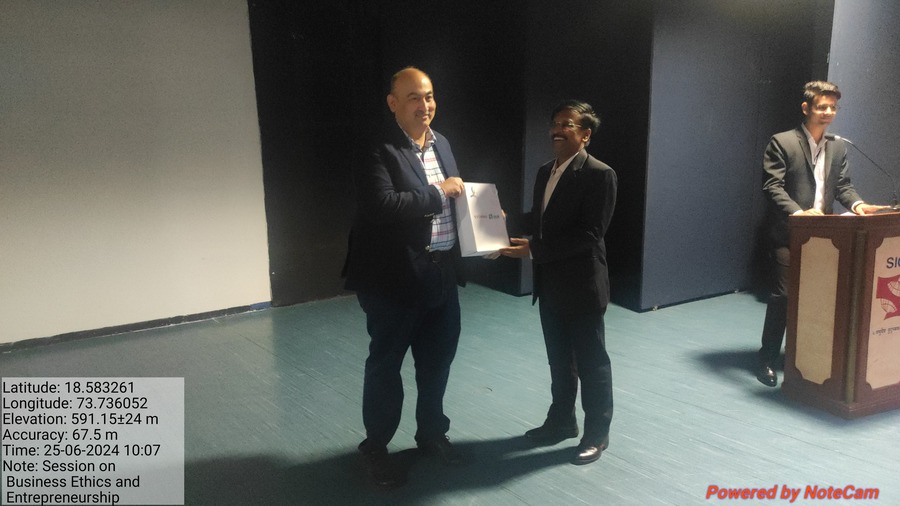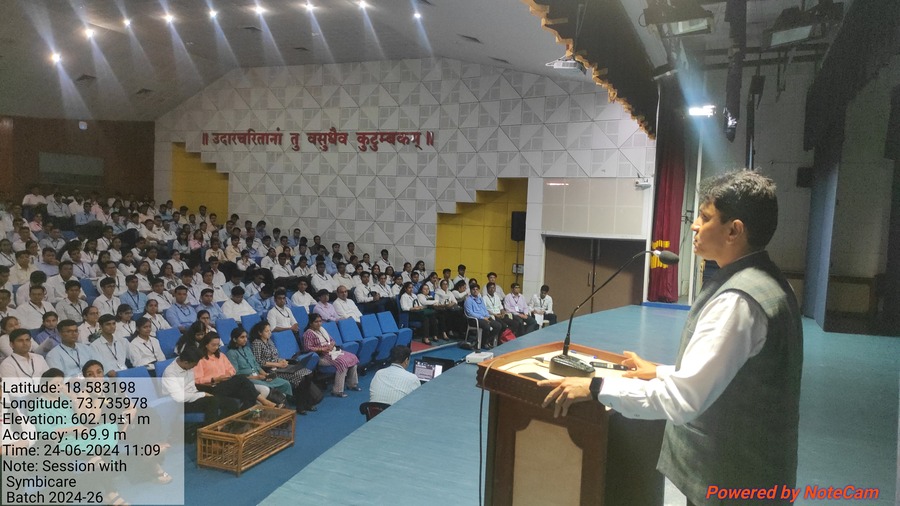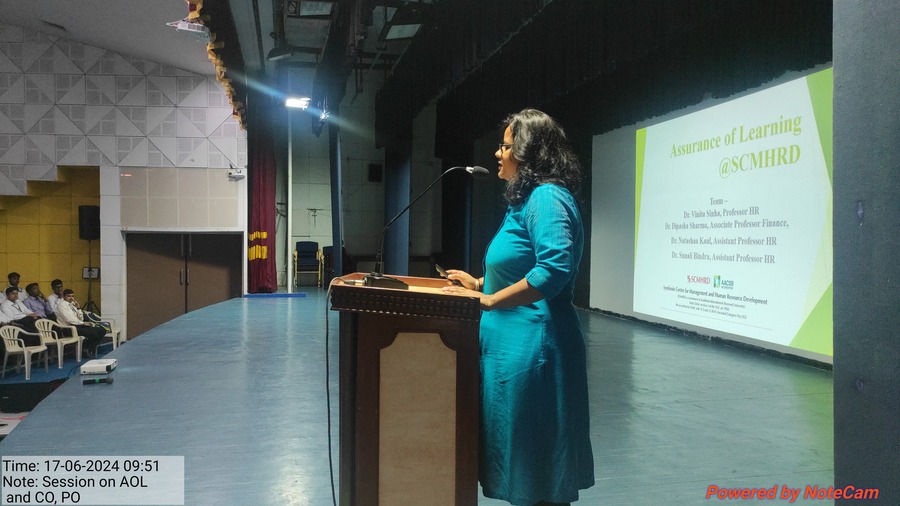
The Leaders� Guide to Best Practices in Employee and Industrial Relations
- 2020-12-04
- SCMHRD
The term ’employee relations’ signifies an organization’s efforts to manage relationships between employers and employees. An organization with adequate employee relations practices focuses on fair and consistent treatment to all employees to improve their commitment and engagement.

Employee behaviour gives a clear indication of the next wave of required social and technological change. A company that has its eyes open to these changes can involve their employees in innovations that the organization offers. When a company treats its employees as an integral part of its operations, it will unquestionably help in employees feeling connected to the organization and its ethos.
There are multiple changes taking place in the organizations’ art of employee relations, engagement and experience. While many books have been written on Human Resource best practices, very few, if any, have focussed on differentiating & reforming practices in the Employee Relations space, specifically for associates on the shop floor.
The advent of technology has impacted the empowerment of people across the organization hierarchy. The wave of automation, digitization and industry 4.0 across different industries compels us to understand how the conventional matrix of employee relations is evolving. Industrial hubs like Pune have been attracting a steady stream of multinational companies which brings new aspects of industrial and employee relations with them. The goal is to create a ‘multiplier force’ by enabling more organizations to learn and implement best practices in their organizations.
Thoughtful HR/IR leaders of some of the notable companies in Pune share the best and innovative IR-ER practices they follow in their respective organizations.
The key insights are:
1. “It is often not the ‘what’, but the ‘how’ – which matters”
- HR Head, Tata Motors
In essence, how the practice is deployed is what matters to the employees. Making the employee feel wanted and valued is termed as critical to the success of the employee-relations initiative.
Take, for instance, the Man of the month award which Tata motors give its employees, the recipient of the award is introduced by a friend, who introduces the person in a truly personal way. This makes the event touching and engages the employee.
In Lupin, the employees are rewarded with stock options across all grades based on their performance. This is in addition to the recognition of individuals and groups for their achievements in 6-monthly townhalls.
IBM does not have an attendance system and provides unlimited sick leave as a reflection of the trust of its employees.
In Cummins, many initiatives have been taken especially for women employees such as young mother programs, nutrition and food habits, yoga and meditation centres.
The promotion at Marriott is entirely merit-based. The process is designed around a robust, Balanced Scorecard methodology. Performance management for managers is done on a real-time basis with an app that facilitates communication between the manager and the General Manager for dynamic feedback.
2. ER Philosophy
It is significant to have a strong philosophy in place, guiding the actions of ER management. Empowering and educating employees is seen as an essential component of mapping their learning into the philosophical foundations of the organization.
In Lupin, employees are treated as partners in progress and are encouraged to generate new ideas, explore fresh avenues and offer solutions that add exceptional value.
Cummins being a value-based organization ensures that every individual undergoes the training program, including the contract labourers. The training focuses on diversity, ethics, prevention of sexual harassment, IT/ technology training and safety.
SKF offers customized career paths to employees in the form of a Team Leader / Circle Leader model. It is based on skill levels, and the selection process is designed on behavioural situations. The trained employees get the opportunity to choose and grow in these customized roles in the organization, thus taking up positions like skill trainer and SME.
Marriott believes in ensuring the satisfaction and happiness of its employees because they believe that happy employees will provide good service to customers.
Moreover, in STL, with the help of the on-boarding process called “Aarambh”, new employees are inducted in a structured manner. Besides, they also have a Buddy program for all new joinees, which helps the employees assimilate with the culture of the organization.
3. Great firms invest in their employees
This perspective is in continuation of the building of the philosophical foundation. The function of learning and development interventions is an essential key in managing the engagement. This implies creating a forum for innovation, tapping into ideas, allowing them to flourish and be rewarded suitably.
Through training and development interventions, organizations create opportunities for employees to grow. IBM provides training on digital tools. Thermax has tied up with technical institutes like Gujarat Technical University to deliver programs.
Lupin has tied up with S P Jain, Mumbai for their sales and marketing personnel, BITS Pilani for manufacturing and with Symbiosis International University and Manipal University for research and PhD programmes.
Cummins has tied up with institutions such as TISS for industrial relations programs and BITS Pilani for technical aspects. Cummins also provides a tuition fee waiver for higher education for relevant programs from predetermined recognized institutions across India.
4. Building a future-ready workforce
STL is committed to career growth and upward mobility of employees. In this year alone job rotations are at 30%. Investing in the future is more important than getting things right today. Most of the leading organizations today focus on preparing their employees in terms of knowledge, skills and attitudes for the dynamic future since its the employees who will drive the success achieved by organizations.
Lupin does this through a novel program of providing further education, including lodging and boarding to 12th pass-outs across the country. On graduation, they receive their degree in a graduation ceremony and are offered a full-time role at Lupin. Along with this, the research department’s “Eureka” and the manufacturing departments’ “Idea Factory” are forums for employees to think of the next innovation. These innovations are audited by the finance team and appear on the open-to-all internal knowledge management portal.
To ensure continued availability of quality talent, SKF recruits trainees to go through a rigorous development process with a continuous performance review. Trainees completing the process become eligible to go through the selection process for full-time employment.
Besides, Cummins is moving from manual training to Automotive and AI-based training to upskill employees.
STL has a skill-matrix based approach that allows a quarterly assessment and up-gradation of skills on the shop-floor.
Notably, Thermax has a program called AIM (All Initiatives Matters). It is a portal where any employee can go and submit his idea, and there is a governance mechanism in place. Lots of good ideas come out of it. Suggestion schemes and boxes are employed to handle grievances for the blue-collared workforce.
5. Collaboration is the key
Driving trust and the ability to confide are essential considerations for great team working, providing the right formal/informal platform to enable creative venting, critical opportunities to participate in decision making: to build a collaborative workplace. Such activities drive engagement and ownership, which is essential for sustained growth.
In Lupin’ Next Levels’, the forum is provided to employees to have meetings with their skip-level managers to voice out concerns and/or issues but with complete confidentiality.
In SKF, a two-day workshop is organized in which the management and union together discuss the future trends w.r.t the industry and the company. The company also has monthly union meetings to discuss the business and how it may affect the workers and SKF. In fact, at SKF, there is an Open Door Policy, and whenever any issue arises, the concerned parties can come and get it resolved.
Tata Motors uses plenty of ways to drive excellence in the workplace. An initiative in this space is called DIFTR (Do It First Time Right). It is designed for blue-collared workers on the shop floor where critical activities are focused upon, and specific training and evaluation parameters are identified to DIFTR.
Formulating an employee relations policy by beginning with even one or two of these ideas will help you to progress on your journey towards industrial democracy, innovatively and systematically.
Special Acknowledgement to MCCIA, HR/IR Committee of MCCIA and Ms. Anjali Byce for co-authoring and enabling the data collection process. The student team and HR faculty members of SCMHRD. Human Capital for publishing this article.
..webp
)
.webp)


